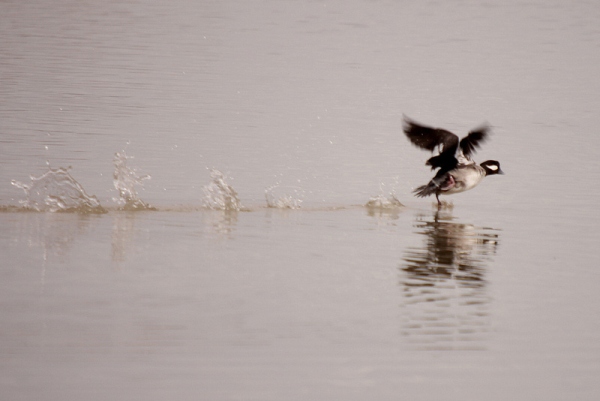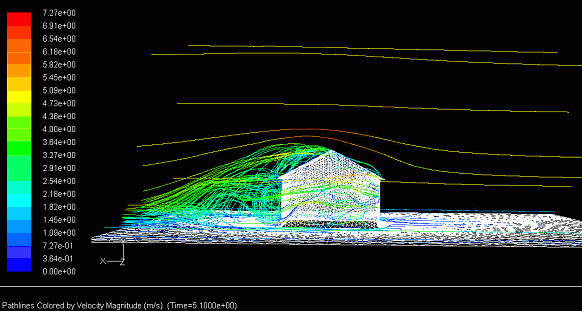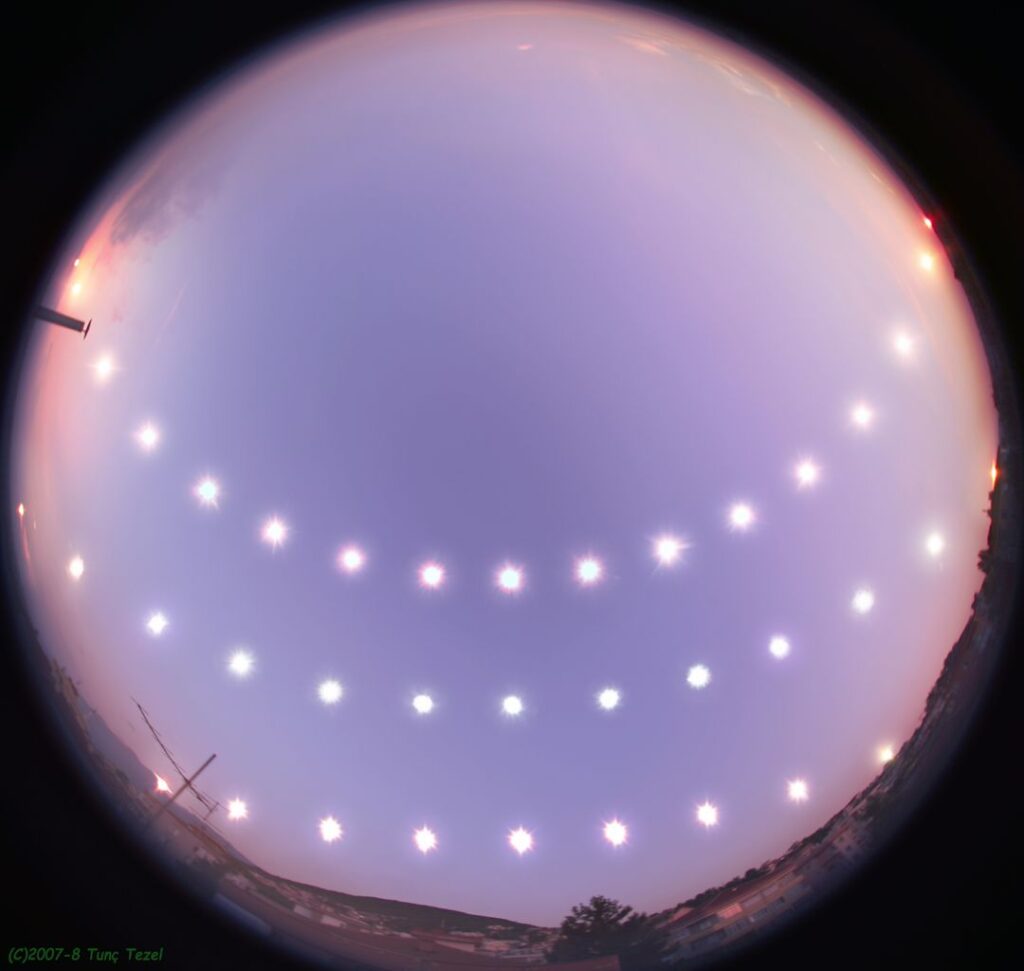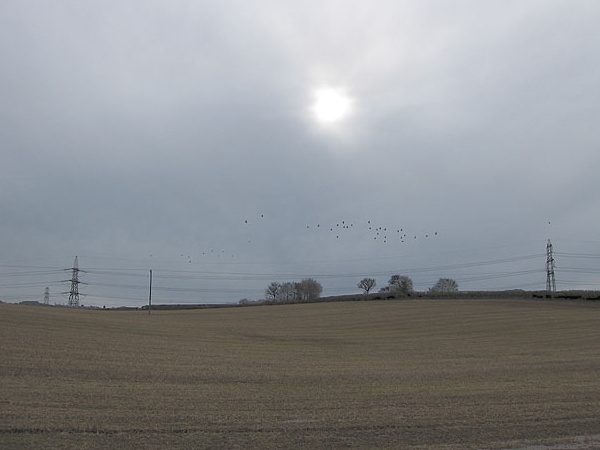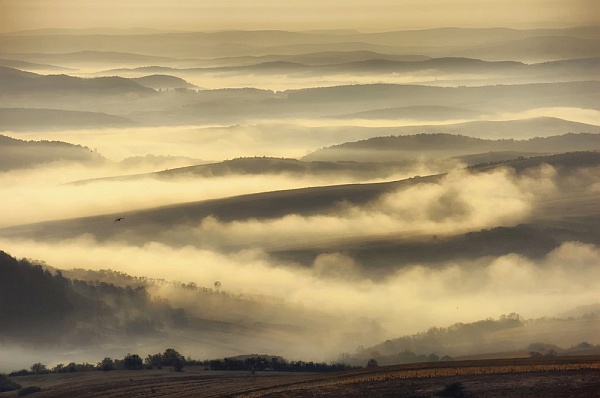I know almost nothing about fluid dynamics but my article about wingtip vortices piqued my interest in the subject.
Last weekend I learned about this amazing phenomenon, the von Kármán vortex street, animated above by Cesareo de La Rosa Siqueira.
Von Kármán vortex streets occur when a fluid flows past a stationary object and generates a long line of vortices that swirl in opposite directions. The phenomenon was named for Theodore von Kármán, the man who described it, and is probably called a street because it looks like one.
We usually don’t see von Kármán vortex streets in the air but it’s important that engineers plan for them. If a tall structure is uniformly straight or uniform structures are grouped too closely the vortices can make them fall down. That’s what happened in November 1965 when three of the eight Ferrybridge cooling towers collapsed in high winds. They could individually withstand the wind speed but not the vortex.
On a small scale, von Kármán vortex streets make wires sing in the wind. On a large scale they’re visible from outer space when clouds blow past a tall island.
Here’s a picture taken from the space shuttle that shows cloud cover blowing past Rishiri Island, Japan. When the wind encounters Mt. Rishiri the clouds form a von Kármán vortex street on the downwind side.
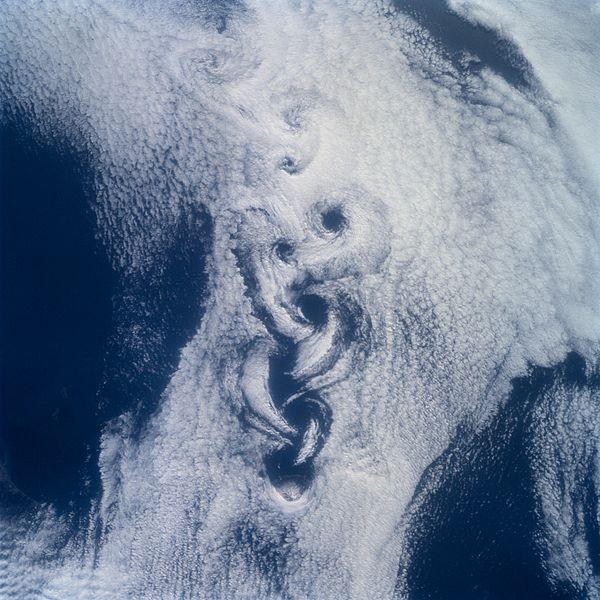
There are more than twenty islands that reliably generate von Kármán vortex streets. Click here to see more pictures from NASA.
(Vortex animation by Cesareo de La Rosa Siqueira via Wikimedia Commons. Space shuttle photo from NASA via Wikimedia Commons. Click on the images to see the originals)


